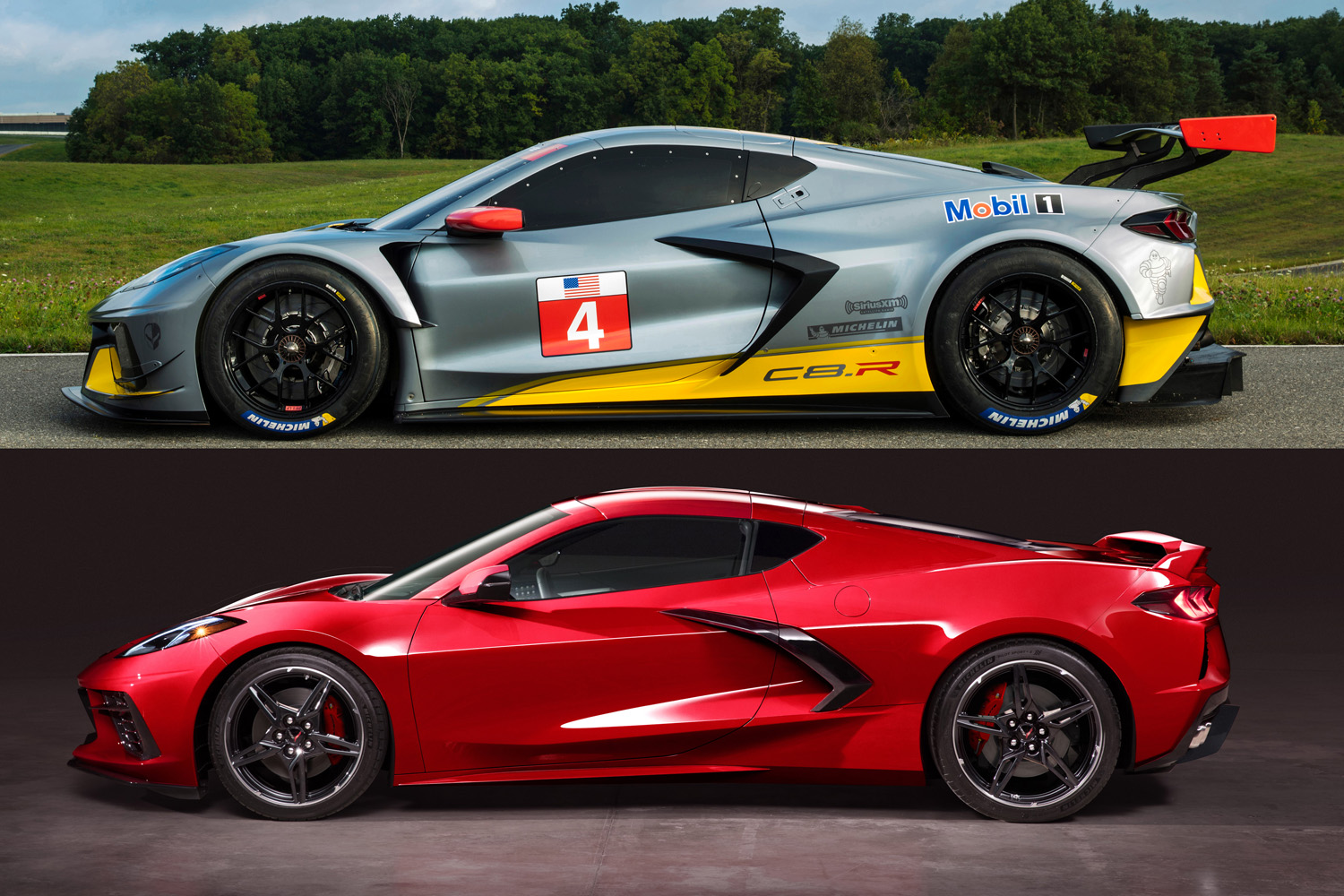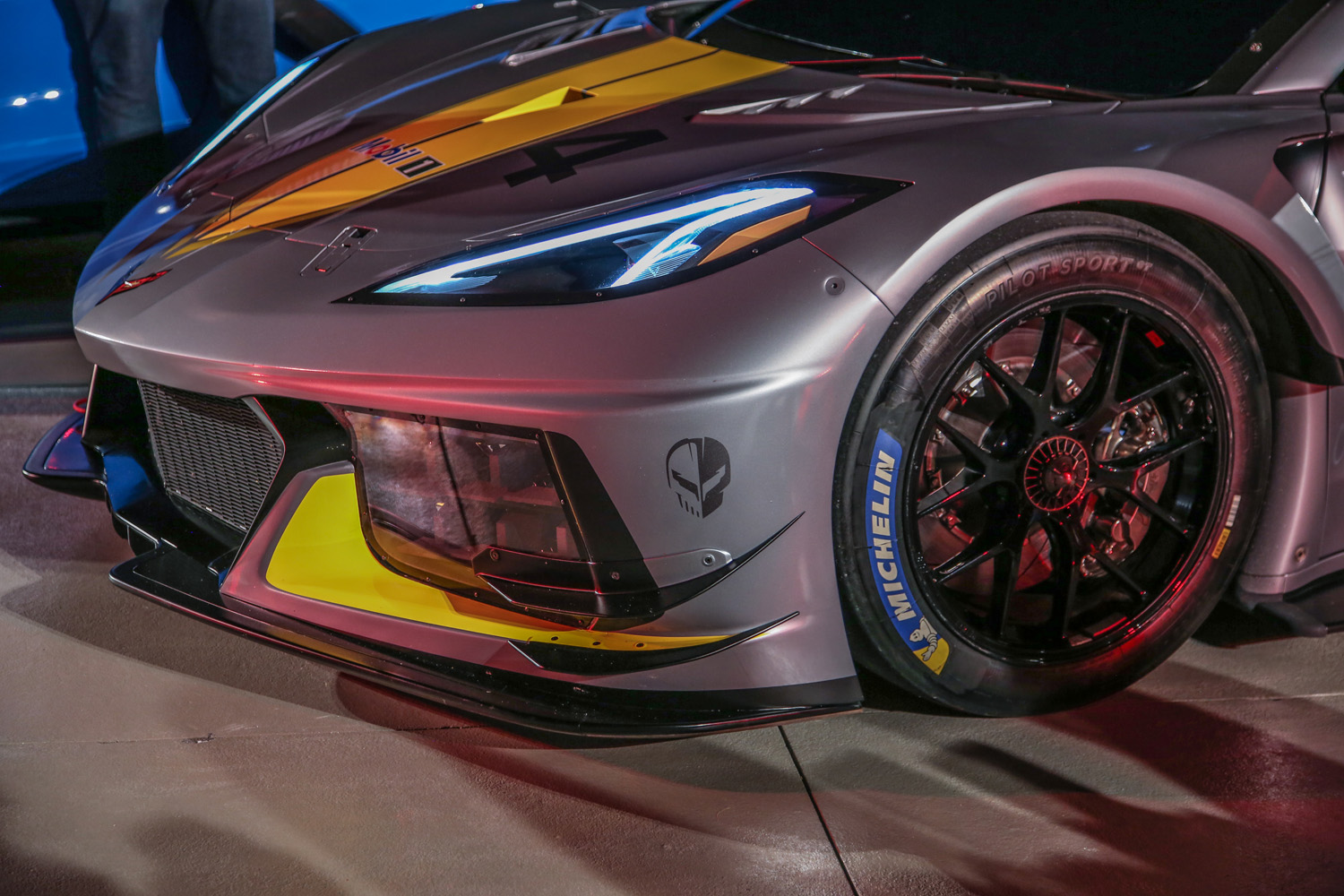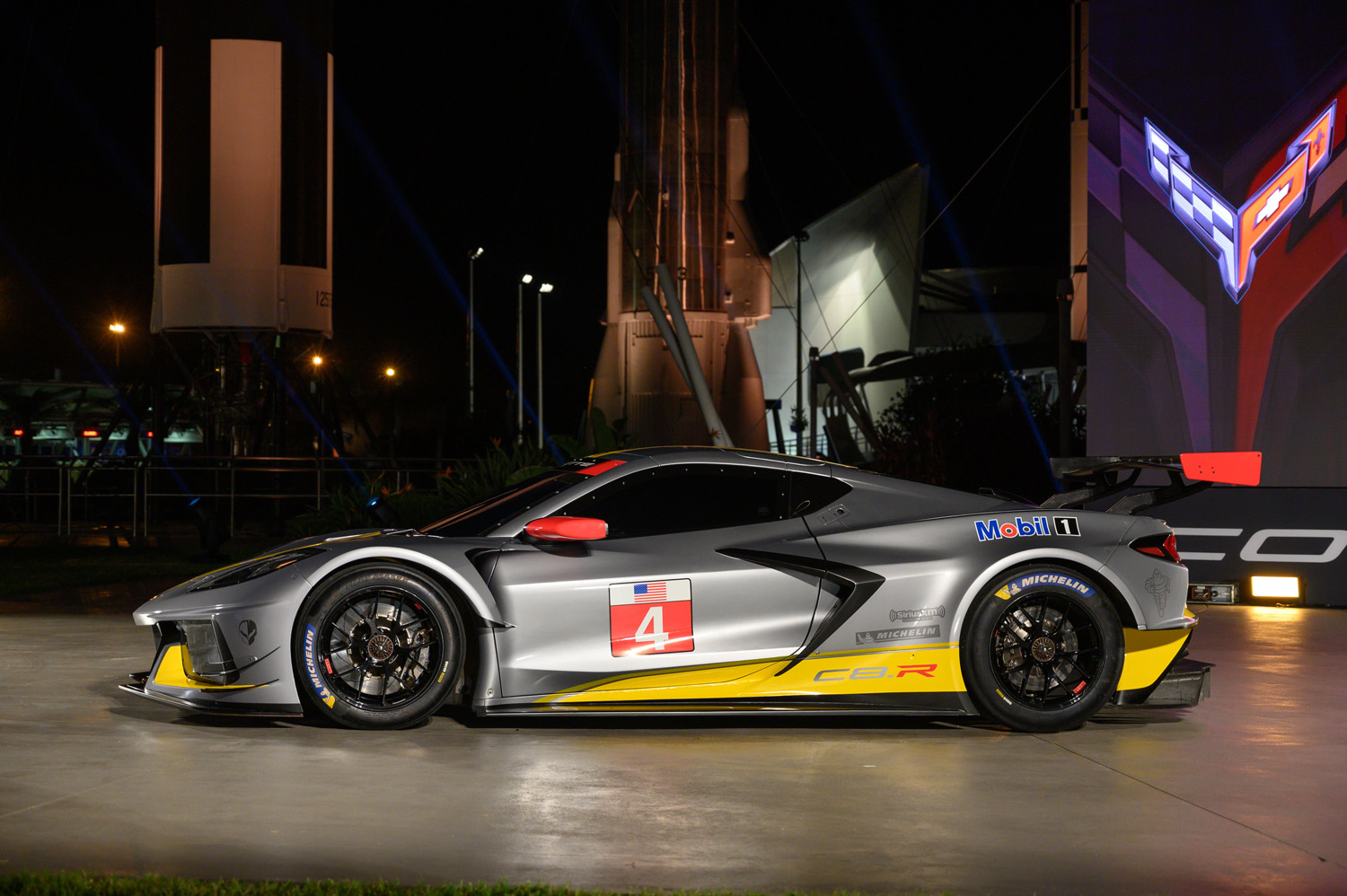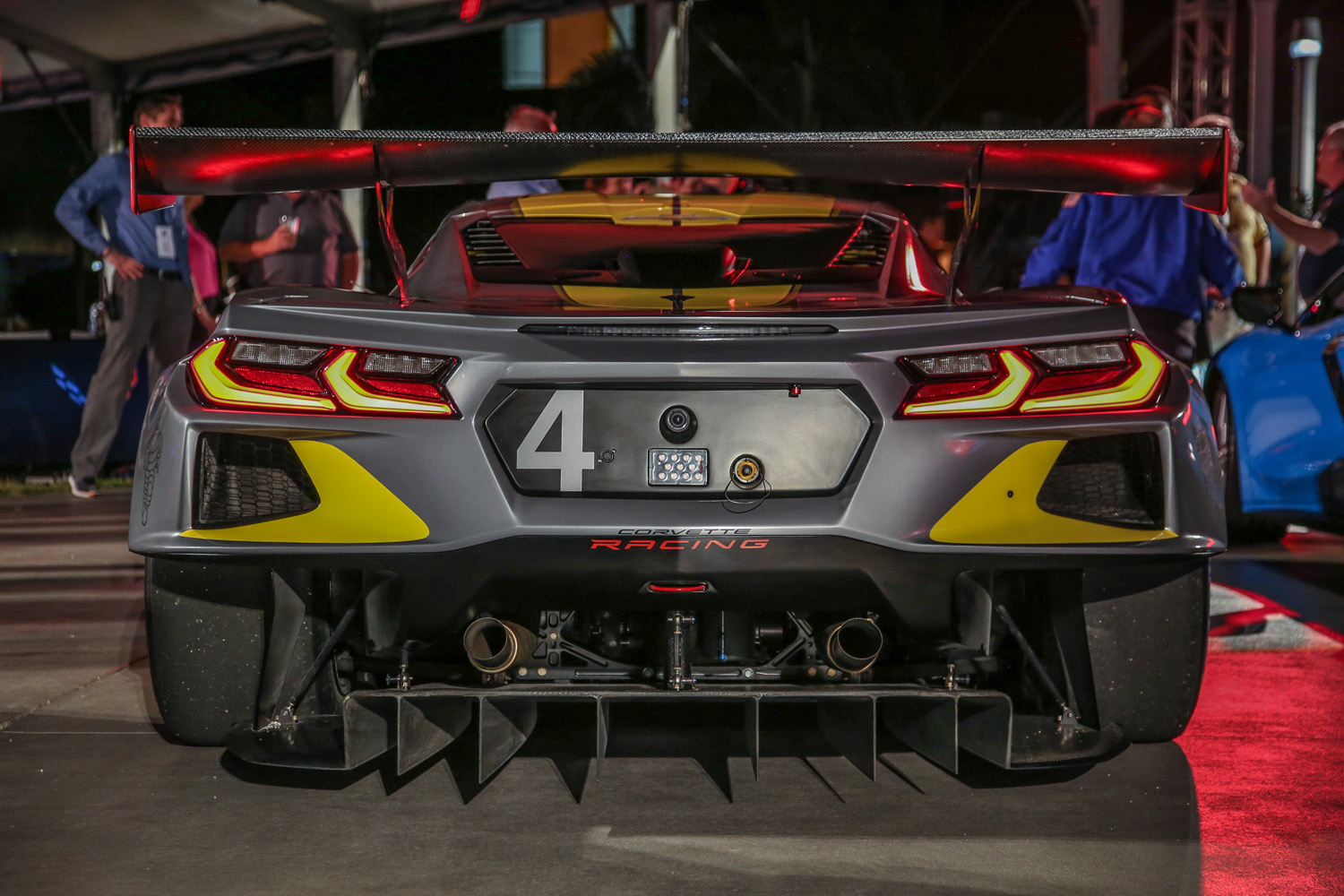Six ways the Corvette C8.R differs from the production 2020 Stingray
Chevrolet used the reveal of the 2020 Corvette convertible to give us a sneak peek of the C8.R that’s set to debut at the 24 Hours of Daytona in January of 2020. While many of the specifics remain a mystery, we walked around the C8.R with Chevrolet designer Tom Peters, who worked on the C7 and C8, and kept our ears open.
We learned that the C8.R was styled in clay simultaneously with the production C8. Optimistically, we take that to mean that the C8.R’s striking and purposeful looks may translate into future track-oriented production variants. Looking at a C7.R side by side with a Z06 shows just how much transfers over already—but is the C8.R’s design too extreme to readily translate into production? Maybe not.
We look at several of the design differences between the Stingray and C8.R and weigh in below.
Stance

Most obvious is the C8.R’s low, wide stance. Just look at how little bodywork remains above the wheel openings. It was all an effort to lower the chassis over the wheels. This is the part that would be tough to translate into a street-driving C8, although we’re sure we’ll be seeing owners lowering their production C8s.
Bodywork


The rear fenders are subtly flared beginning at the large scoops on the flanks, while the front fenders were designed to conform to GTE class regulations. Designer Tom Peters had hoped to carry the fender’s flare lower into the rocker, but the rules pretty much dictated the truncated look. Could that be interpreted as a hint of future production widebody C8 variants?
Either way, the result is a purposeful aerodynamic and visual effect. It’s easy to see that a tremendous volume of air can move through, especially with the radiused leading edge of the doors.
Also worth mentioning is the noticeable changes made in the shape and orientation of the side scoops. With everything else that’s going on visually it’s easy to overlook, but side by side it’s obvious.
Air intakes


The Stingray’s 495-horsepower LT2 V-8 breathes from a rear-facing throttle body that draws in the atmosphere from a massive air cleaner that’s fed from the air that enters the side scoops.
On the C8.R, intake air enters through a scoop on top of the rear hatch, just above a recessed scoop that feeds additional air to cool the engine bay. (There’s also a NACA duct front and center in the C8.R’s bonnet, but that’s for the driver’s air supply.)
Cooling

A pair of radiators for the LT2 lies behind two inlets on the Stingray’s lower front corner, dividing the cooling duties and easily spotted behind the grilles.
In contrast, the C8.R has reconfigurable LED headlights on the lower outboard edges of the fascia. Air instead enters the center grille to cool a single, center-mounted radiator. That mounting location is viable because the race version doesn’t have a frunk. As we mentioned, air exits behind the wheels, but also through vents at the trailing corners of the bonnet.
Door handles

Corvettes haven’t had traditional door handles since the C5. Instead, they rely on pressure-sensitive pads to electronically activate the door latch, just like the rear hatch of many SUVs. On the C6 and C7, those pads were at the trailing edge of the doors, behind a recess in the quarter panel. For the Stingray, they’re cleverly tucked under the leading edges of the large scoops.
The C8.R also doesn’t use a traditional door handle. To open the door, the driver simply pulls on a loop of braided steel wire protruding from the C-pillar. It’s not very elegant, but it gets the job done and it’s a common sight on track cars.
Downforce

We already mentioned the front fenders and their role in evacuating air from behind the radiator, but the front fenders and fascia also carry dive planes and a substantial chin spoiler.
And how could we forget the massive rear wing? Twin mounts transfer the downforce between the hatch and fender panels to the aluminum chassis below. Combine the wing with the open rear diffuser, also unique to the race variant, and this looks like one planted Le Mans challenger.
Current Stingray wings are nowhere near as bold or racy, but the current C7 ZR1 might indicate that the Corvette team isn’t afraid to go big on the aero package when it comes to production cars.
Let’s hope that the C8.R is just the 11/10ths version of the next Corvette widebody. We’ve got a feeling, especially after the Camaro ZL1 1LE and C7 ZR1, that Chevrolet is more and more willing to give consumers a track car with fewer compromises.


